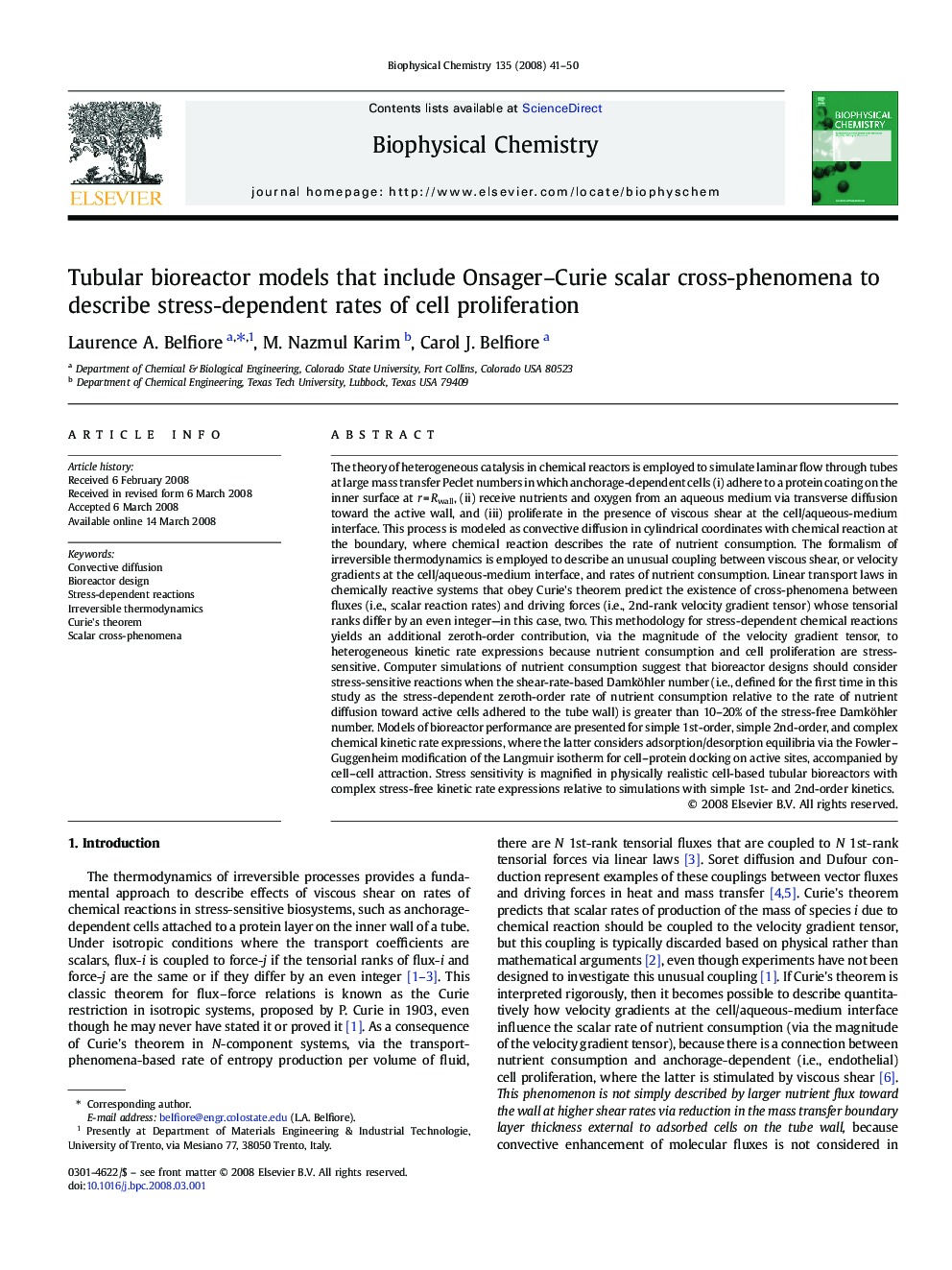| Article ID | Journal | Published Year | Pages | File Type |
|---|---|---|---|---|
| 5372036 | Biophysical Chemistry | 2008 | 10 Pages |
The theory of heterogeneous catalysis in chemical reactors is employed to simulate laminar flow through tubes at large mass transfer Peclet numbers in which anchorage-dependent cells (i) adhere to a protein coating on the inner surface at r = Rwall, (ii) receive nutrients and oxygen from an aqueous medium via transverse diffusion toward the active wall, and (iii) proliferate in the presence of viscous shear at the cell/aqueous-medium interface. This process is modeled as convective diffusion in cylindrical coordinates with chemical reaction at the boundary, where chemical reaction describes the rate of nutrient consumption. The formalism of irreversible thermodynamics is employed to describe an unusual coupling between viscous shear, or velocity gradients at the cell/aqueous-medium interface, and rates of nutrient consumption. Linear transport laws in chemically reactive systems that obey Curie's theorem predict the existence of cross-phenomena between fluxes (i.e., scalar reaction rates) and driving forces (i.e., 2nd-rank velocity gradient tensor) whose tensorial ranks differ by an even integer-in this case, two. This methodology for stress-dependent chemical reactions yields an additional zeroth-order contribution, via the magnitude of the velocity gradient tensor, to heterogeneous kinetic rate expressions because nutrient consumption and cell proliferation are stress-sensitive. Computer simulations of nutrient consumption suggest that bioreactor designs should consider stress-sensitive reactions when the shear-rate-based Damköhler number (i.e., defined for the first time in this study as the stress-dependent zeroth-order rate of nutrient consumption relative to the rate of nutrient diffusion toward active cells adhered to the tube wall) is greater than 10-20% of the stress-free Damköhler number. Models of bioreactor performance are presented for simple 1st-order, simple 2nd-order, and complex chemical kinetic rate expressions, where the latter considers adsorption/desorption equilibria via the Fowler-Guggenheim modification of the Langmuir isotherm for cell-protein docking on active sites, accompanied by cell-cell attraction. Stress sensitivity is magnified in physically realistic cell-based tubular bioreactors with complex stress-free kinetic rate expressions relative to simulations with simple 1st- and 2nd-order kinetics.
